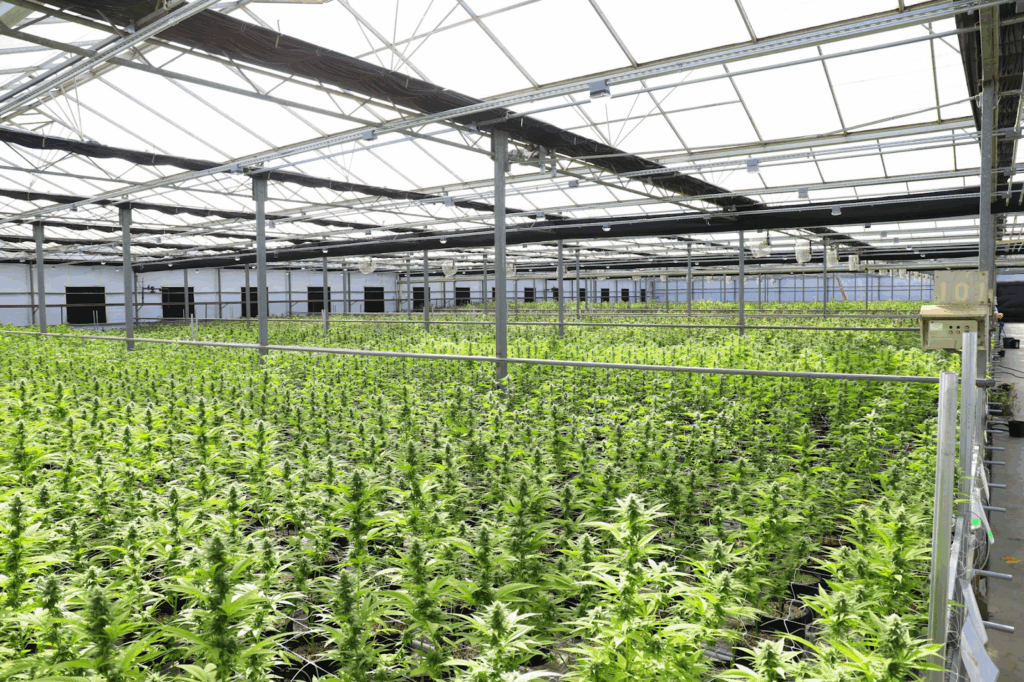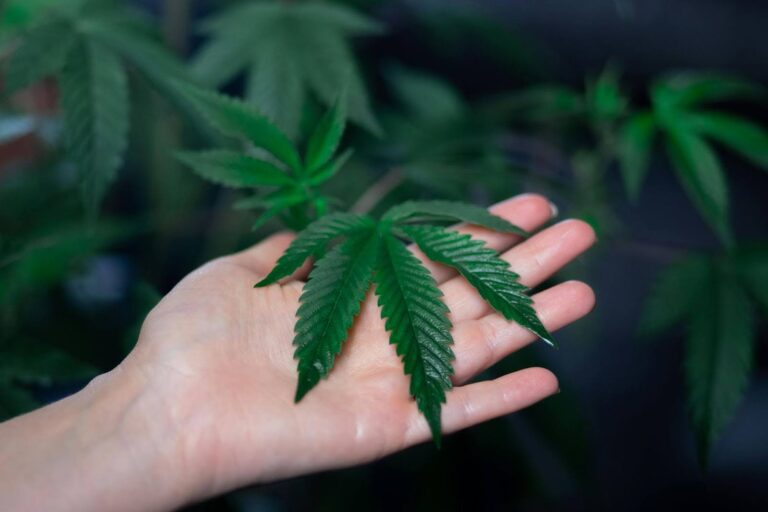What if you are overlooking the nutrient that could make your cannabis plants stronger and better?
But what is this critical nutrient? Silica is getting widely adopted into cannabis cultivation practices and is gaining traction among advanced growers. As competition will become more intense in the future, utilizing more innovative nutrient strategies could keep you ahead of your competitors.
As the cannabis industry continues its rapid transformation, growers like you are increasingly turning to science-backed techniques to improve yield, resilience, and plant health. So, using a powerful tool like silica can contribute to healthier and more robust cannabis plants.
In this article, you’ll discover why silica is beneficial for you as a cannabis cultivator. Let’s dive into how it works and why it matters.
Understanding Silica in Cannabis Cultivation
Cannabis cultivation, like any form of agriculture, depends heavily on the right balance of nutrients and minerals. While elements like nitrogen, phosphorus, and potassium get much of the spotlight, silica, also known as silicon dioxide, is often overlooked despite its significant role in plant health.
Silica is the second most abundant element in the Earth’s crust, found in everything from rocks to beach sand. In outdoor cultivation, cannabis plants can naturally access silica from the soil. However, in potted or hydroponic setups, silica content is often lacking, limiting a plant’s ability to grow strong and resist stress.
This is where silica supplements come into play. Given the booming market, legal cannabis sales exceeded $25 billion in 2023 in the U.S. alone. Growers are increasingly seeking ways to boost plant health, yields, and resilience.
Incorporating silica into your grow routine could be the strategic edge your cultivation process needs. Now let’s take a closer look at the key benefits of silica for healthier and faster plant growth.
Key Facts About Silica in Cannabis Cultivation
- How plants absorb silica: Roots take up silica from the soil or growing medium in a form called monosilicic acid.
- Where silica goes: It builds up in cell walls, trichomes (sparkly resin glands on buds), and the plant’s outer layers (epidermis).
- Why it’s helpful: Silica protects plants from stress and boosts growth, yields, nutrient absorption, and overall plant health.
Benefits of Silica for Cannabis Plants

Canna silica may not be classified as an essential nutrient, but its presence in soluble form is important because it improves a plant’s growth, stress resistance, and overall yield quality. By addressing some of the common challenges like nutrient imbalances and environmental stress, silica enhances plant strength and helps unlock a better growth potential.
Here are some of the key benefits of using silica in cannabis cultivation:
1. Strengthens Cell Walls
Silica reinforces plant cell walls from within, resulting in sturdier stems and branches that better support heavy buds. This internal strengthening also improves water and nutrient transport throughout the plant, contributing to increased size and structural integrity.
2. Enhances Stress Tolerance
Often referred to as a “super vitamin,” silica helps plants cope with abiotic stress like drought, heat, and wind. It creates a thin protective layer on the plant surface, reducing water loss from transpiration and helping outdoor plants adapt more easily to shifting conditions.
3. Improves Resistance to Pathogens and Pests
By reinforcing cell walls and increasing tissue density, canna silica makes it harder for fungal pathogens like powdery mildew and downy mildew to infiltrate the plant. It also prevents insect pests by toughening foliage, making it less appetizing and more challenging to penetrate.
4. Prevents Heavy Metal Toxicity
Silica reduces the bioavailability of harmful heavy metals like cadmium, lead, and mercury in the soil, limiting their uptake and protecting plant metabolism from toxic interference.
5. Boosts Nutrient Absorption and Metabolic Efficiency
Silica enhances the uptake of key nutrients such as nitrogen, potassium, and magnesium by improving root function and vascular flow. It also increases chlorophyll content and supports more efficient CO₂ usage, promoting stronger photosynthesis and overall plant vitality.
With so many proven benefits, silica deserves a permanent place in every grower’s toolkit. If you want to make the most of silica’s benefits in your grow?
PlanaCan helps you bring precision and consistency to every stage of cultivation. From nutrient application to harvest scheduling, the software is built for growers. Its intuitive platform lets you track inputs like silica usage, monitor plant health, and streamline daily tasks so nothing gets missed.
Now that you have explored how silica benefits cannabis plants, let’s take a closer look at how to properly apply it in different grow setups.
Effective Canna Silica Application Methods for Growers
To truly capitalize on the benefits of silica in cannabis cultivation, it’s essential to apply it correctly based on your growing setup. Whether you’re working with soil, hydroponics, or foliar feeds, each method offers specific advantages.
1. Soil Amendment
For soil growers, the simplest way to add silica is to change the growing medium with silica-rich materials like diatomaceous earth or potassium silicate. These sources release silica slowly, supporting consistent uptake as the plant develops, especially during the vegetative stage.
2. Foliar Spray
Using silica as a foliar spray allows for rapid absorption through the leaves. This is particularly effective in hydroponic or inert media systems where soil-based uptake is unavailable. Apply potassium silicate sprays every 7–14 days, preferably during early growth and pre-flowering stages.
3. Hydroponic Integration
In hydro systems, silica should be mixed separately from other nutrients and added gradually to avoid nutrient lockout or pH imbalances. Maintaining a pH range between 5.5 and 7.0 ensures optimal absorption. Regular monitoring is essential for consistent silica delivery.
Pro Tips for Canna Silica Use:
- Use silica supplements during the vegetative phase for best structural benefits.
- Ensure compatibility with other nutrients to avoid precipitates or imbalances.
- Avoid combining silica with phosphorus-heavy feeds in the same reservoir—add silica first, then nutrients after proper mixing.
By tailoring your application method to your grow system, you can unlock silica’s full potential, leading to more vigorous, healthier, and more productive cannabis plants. Now, let’s explore the use of silica through the growth cycle for better results.
Using Silica Throughout the Growth Cycle
Silica plays an important role in cannabis cultivation, especially during the plant’s rapid growth stages. Its uptake varies across the vegetative, stretch, and flowering phases, making it essential for cultivators to apply canna silica strategically for maximum benefit.
Overview of Silica Uptake During Growth
Silica is absorbed at a rate similar to water uptake via evapotranspiration. It is most crucial during the “stretch” phase (weeks 4–8) when stem elongation and fiber strengthening peak. It helps maintain plant structure, nutrient transport, and overall vitality throughout the life cycle.
Key Stages and Silica Usage
Using Silica in the cannabis cultivation growth cycle has several stages, starting with the vegetative stage. Let’s explore it!
- Vegetative Stage: Silica supplementation during the vegetative stage of cannabis growth helps promote stem strength, enhance root development, and support cell wall formation. It also supports cell wall formation and prepares the plants for rapid vertical growth.
- Stretch Phase (Weeks 4–8): This is the period of highest silica demand. It supports stem elongation, strengthens bast fibers, and prevents lodging. Weekly monitoring of silica levels is recommended, especially in hydroponic or recirculating systems.
- Flowering Stage: Silica demand decreases as structural growth slows. Continued low-dose supplementation helps support bud development and strengthens defense against pests and stress.
Pro Tips for Better Cannabis Plant Growth
- Silica can be used throughout the entire growth cycle, including flowering. Some growers stop silica use after week 3 of flowering, but many use it until harvest with success.
- Silica raises soil pH, so monitor with a pH meter and adjust the pH if needed. Do not mix silica with other nutrients; apply on non-feeding days to prevent bioavailability issues.
- Silica must be applied separately from other nutrients in hydro setups. It is best used with a dedicated ebb-and-flow system and a separate nutrient reservoir for silica.
- Follow product instructions for dilution; avoid nutrient lockout. Keep the silica solution’s pH above neutral to maximize uptake.
- Use silica gel sachets (e.g., Royal Queen Seeds Moisture Fighters) to regulate humidity during drying and curing. Depending on the desired bud moisture, choose 58% or 62% humidity levels.
- Use 8g sachets for small personal batches and 67g sachets for larger curing amounts. The color-change dot (purple → blue) indicates when to replace the sachet. This helps prevent mold and preserve the texture, aroma, and potency of buds.
Using canna silica at the right stages, especially during the stretch, can significantly enhance plant strength, yield, and stress resistance. If you are looking to take control of your plant, then choose PlanaCan. This grower-first cultivation software helps you schedule every nutrient application, track your harvest progress, and communicate with your team. With automated work scheduling, an interactive calendar, and mobile-ready team management tools, you can define repeatable processes, keep everyone in sync, and adjust in real time.
Next, let’s take a closer look at how silica helps cannabis plants stand up to environmental stress. From temperature swings to drought conditions, here why it matter.
How Silica Works with Cannabis Environmental Stress
Silica plays an important role in helping cannabis plants withstand environmental stressors by reinforcing their physical structure and enhancing their natural defense systems.
How Silica Fortifies Cannabis Against Stress
Here are the ways in how silica protect cannabis against the stress:
1. Strengthens Plant Tissues
Silica accumulates in the epidermis and cell walls, forming a toughened barrier that makes it harder for fungal pathogens to penetrate and discourages insect herbivory. This physical fortification reduces the risk of diseases like powdery mildew and damage from pests.
2. Enhances Tolerance to Heat, Cold, and Drought
By reinforcing cell walls and maintaining turgor pressure, silica helps plants retain water more efficiently. This improves their ability to cope with temperature extremes and drought conditions—especially critical in outdoor and climate-variable grows.
3. Boosts Immune Response
Silicon primes the plant’s immune system by activating defense-related genes and signaling pathways. This promotes the production of protective compounds, enabling quicker and stronger responses to pathogen attacks.
By integrating silica into your cultivation routine, you’re not just feeding your plants but you’re giving them armor against the elements. With several benefits and tips covered it is also important to address some of the challenges below.
Challenges and Considerations in Silica Application
Silica in cannabis cultivation offers many benefits. However, it’s essential to be aware of certain challenges and considerations to optimize its use. Let’s look into some of the challenges:
pH Management
- Alkalinity of Silica: Silica supplements, especially potassium silicate, are alkaline and can raise the pH of the growing medium.
- Nutrient Lockout Risk: Elevated pH levels can lead to nutrient lockout, preventing plants from absorbing essential nutrients like calcium and magnesium.
- Recommendation: Regularly monitor and adjust the pH of your soil or hydroponic solution to maintain optimal nutrient availability.
Mixing with Other Nutrients
- Compatibility Issues: Silica should not be mixed directly with other nutrients, especially those containing calcium or magnesium, as it can cause precipitation and reduce nutrient availability.
- Recommendation: Add silica to your nutrient solution separately and ensure it’s well-diluted before introducing other nutrients.
Overapplication Risks
- Toxicity Symptoms: Excessive silica can lead to symptoms like leaf burn, brittle stems, and deformed flowers.
- Recommendation: Adhere to manufacturer guidelines for dosage and monitor plants for signs of overapplication.
Solubility Challenges in Hydroponics
- Precipitation Risks: In hydroponic systems, silica can precipitate out of solution, especially when mixed with other nutrients or at inappropriate pH levels, leading to clogged irrigation lines.
- Recommendation: Use silica in a separate reservoir or inject it into the system before other nutrients, maintaining a pH that keeps silica soluble.
Bioavailability in Soil
- Microbial Activity: The availability of silica in soil depends on microbial activity, which converts it into forms plants can absorb.
- Recommendation: Maintain healthy soil microbiota through organic practices to enhance silica availability.
In high-demand cultivation environments, staying organized across multiple harvest cycles can be a major operational challenge.
This is where tools like PlanaCan stand out. Designed specifically for commercial cannabis grows, PlanaCan simplifies team coordination, task scheduling, and workflow tracking—ensuring nothing falls through the cracks.
As Andreas Hero, Co-Owner of Garden First Cannabis, explains: Simple to use, and effective. We’ve got 8 rotating harvests in the grow at all times. With PlanaCan, I can make sure everyone knows what to do with each harvest and when to do it. Also, if something changes, it’s super easy to make adjustments in the schedule, so everything stays on track.
PlanaCan’s intuitive interface and real-time updates help cultivators stay agile, efficient, and focused on producing top-quality yields, especially as operational complexity scales.
Conclusion
Silica is a vital yet often underutilized component in cannabis cultivation. When applied correctly, it strengthens plant cell walls, enhances resistance to environmental stress, and supports overall growth and nutrient uptake. These benefits lead to sturdier stems, better bud support, and increased yields, which are key outcomes for any serious grower.
By using silica thoughtfully in your nutrient routine, especially during critical phases like the stretch, you not only improve plant health but also ensure a more productive and resilient crop. If you’re ready to simplify operations and scale your grow with confidence, then choose PlanaCan. It is a powerful, grower-first cultivation software built specifically for commercial cannabis operations.
It replaces outdated whiteboards and spreadsheets with an all-in-one digital platform that automates task scheduling, tracks every step of the cultivation cycle, and keeps teams aligned through mobile access and real-time updates. Schedule a Free Call Today.




